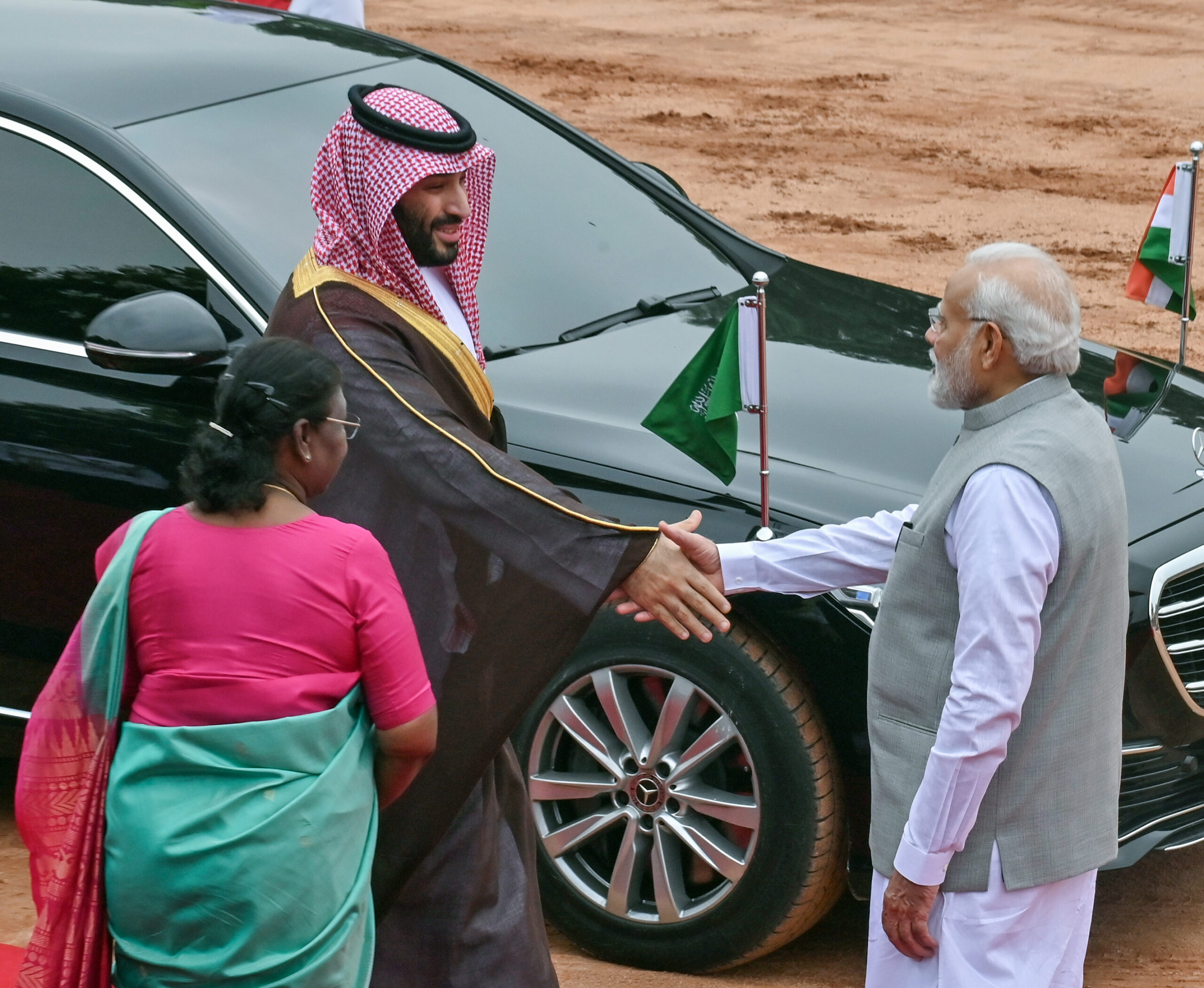


One of the more significant images emerging from the G20 Summit was that of Prime Minister Narendra Modi standing between US President Joe Biden and Saudi Crown Prince and Prime Minister Mohammad Bin Salman (MBS), with the three holding hands and smiling amongst themselves. The photo-op was at the launch of the India-Middle East-Europe Corridor (IMEC), where other leaders from the region were also present, but this single image was symbolic of a major shift that is taking place in the geopolitical order. It represented the rapprochement between the United States and Saudi Arabia—ties that had got strained post the murder of dissident journalist Jamal Khashoggi in Turkey, pushing Saudi Arabia towards China. It would not be an exaggeration to say that as the main driver of the IMEC, India played a major role in this rapprochement. The announcement was also the first proper challenge thrown to China’s Belt and Road Initiative (BRI). One of the main reasons behind the failure of China’s BRI is India’s absence from it. Without India’s economic heft, Xi Jinping can push his pet project only to a limited extent because the majority of the countries that comprise the BRI are either economically weak or bankrupt. Compared to BRI, the IMEC is a game-changer because it has India in it, and is backed by the United States, and thus the West. Thirdly, it shows that the US has started to get its geopolitics right, by acknowledging that India’s rise symbolises the rise of a third force—the other two being the US and China—and that a large part of not only the Global South but also the oil rich Gulf are becoming a part of this force, with India as the nucleus.
It is in this context that India-Saudi Arabia relations have to be seen—socio-economic relations that have existed for centuries are now getting enhanced into a strategic partnership, aiding the rise of the third force. Trade between India and Saudi Arabia have existed from the time dhows used to sail the waters of the Arabian/Persian Gulf and spices from India found their way to the port city of Jeddah. With the discovery of oil, Saudi Arabia—and sometimes Iraq—occupied the number one spot as supplier of oil to India for many years, until recently, Russia with its discounted oil, supplanted it. Given the presence of a huge Indian diaspora in Saudi Arabia, plus the thousands of visitors to that country for Haj, a strong people to people connection has also enhanced relations. And now the India-Saudi Arabia Strategic Partnership Council (SPC) adds a new chapter to the bilateral relations by adding a strategic and security aspect to the mix.
Prime Minister Narendra Modi and the Crown Prince, who is on a state visit to India, held the first leaders’ meeting of the SPC on Monday in New Delhi. According to PM Modi, “India-Saudi Arabia partnership is crucial for stability and welfare of the region and the world.” According to the Ministry of External Affairs, issues such as energy security, trade and investment, defence and security, healthcare, food security, culture and community welfare were discussed. While energy security, that is oil, still forms the central pillar of India-Saudi relations, the defence and security aspect of the ties has been gaining momentum over the years. Among other things, India-Saudi maritime exercises have been taking place, with the focus on inter-operability, capacity building and maritime security. The intention is to ensure regional stability in the Arabian/Persian Gulf and Arabia Sea, and securing the sea lanes through which a lot of trade passes. For India, the partnership is also about protecting its strategic and diaspora interests in the Gulf. For example, India used Saudi ports to evacuate its citizens from a war-torn Sudan earlier this year. Also, by partnering with Saudi Arabia, India is pre-empting China, which wants to secure its foothold in the region. There is also a buzz about the possibility of India selling its Brahmos missiles to Saudi Arabia. Importantly, as India-Saudi strategic partnership gains in momentum, it also marks a shift away from Saudi-Pakistan strategic partnership. As Pakistan sinks into ignominy, running to Saudi Arabia time and again with a begging bowl, it is but natural that this will have an impact on Saudi-Pak ties. How long can religion be the glue when one partner turns into a basket case? In this context, it is significant that MBS is not visiting Pakistan either on his way to or from India.
The visit is also important in terms of sending out a message to the Islamic ummah. Saudi Arabia, the seat of Mecca and Medina, is the leader of the Islamic world. For the Crown Prince of that country, the de facto ruler, to embrace warmly the Prime Minister of India, who is constantly vilified as an oppressor of minorities, proves all such claims to be fake. All the OICs of the world and their counterparts in India, including many of India’s political parties, need to take note of this. Meanwhile, there is buzz that India and Saudi Arabia are ready to trade in rupees, showing how well the relationship is doing.